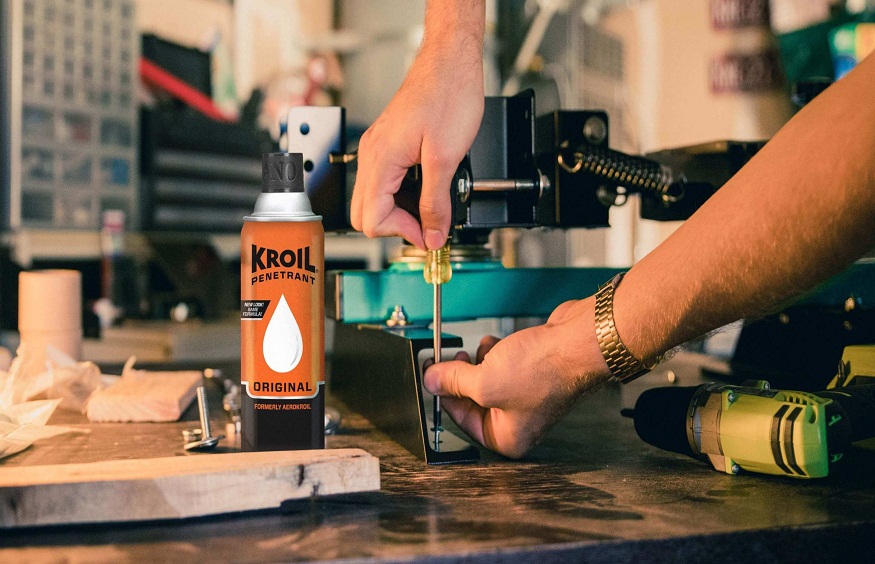In the world of machinery maintenance, industrial penetrating oil stands as a pivotal solution for easing stubborn bolts and ensuring smooth machine operation. However, the environment can significantly influence its effectiveness. Understanding the role of temperature and environmental conditions during application can make the difference between successful maintenance and an arduous task.
Why Temperature Matters in Oil Application
Temperature plays a critical role in the viscosity and penetration capabilities of good penetrating oil. When temperatures are too low, the oil can thicken, making it difficult to seep into the tight crevices where it’s needed most. Conversely, extremely high temperatures might cause the oil to thin out excessively, reducing its ability to lubricate effectively.
Machinery often operates under specific temperature conditions, and applying industrial penetrating oil outside these parameters can lead to suboptimal performance. For optimal results, ensure that the oil you choose is suited for a range of temperatures your equipment typically experiences.
How Cold Weather Affects Penetrating Oil
In colder climates or during winter months, industrial penetrating oil can become more viscous. This increased thickness might hinder the oil’s ability to penetrate rusted or corroded surfaces effectively. It’s essential to select a product designed to perform well at lower temperatures, ensuring it maintains its fluidity.
Choosing oils with protective additives can combat the effects of cold weather, providing both lubrication and protection against future corrosion. This approach helps maintain machinery efficiency even in harsh winter conditions.
The Impact of High Temperatures on Oil Performance
When temperatures soar, the properties of industrial penetrating oil can shift dramatically. High temperatures may cause the oil to evaporate faster, leaving critical components without the necessary lubrication. Additionally, the oil might lose its ability to form a protective barrier against corrosion.
Selecting an oil formulated for high-temperature environments is crucial. These oils possess additives that enhance thermal stability, ensuring they remain effective even when temperatures rise drastically.
Humidity’s Role in Penetrating Oil Effectiveness
Humidity levels can also influence how well penetrating oil works. In humid conditions, moisture can promote rust and corrosion, making it harder for oil to do its job. It’s vital to use oil that offers rust prevention and can displace moisture effectively.
Some penetrating oils are tailored specifically to handle humid environments. These products include corrosion inhibitors that create a barrier against moisture intrusion, safeguarding metal surfaces from degradation.
Adapting to Variable Climate Conditions
Machines in diverse settings require oils that adapt to changing environmental conditions. Whether dealing with fluctuating temperatures or unpredictable humidity levels, a versatile industrial penetrating oil is key. This adaptability ensures that machinery remains operational and efficient, regardless of climate variations.
Selecting oil with a broad operating temperature range is a strategic choice for businesses facing variable weather conditions. This flexibility minimizes maintenance challenges and prolongs equipment life.
The Science Behind Oil Formulation
Modern industrial penetrating oils are formulated with advanced chemistry that accounts for environmental variables. These formulations often include synthetic base oils and specialized additives that enhance performance across a wide array of conditions.
Understanding the chemistry behind these oils can guide users in choosing the right product. Oils containing anti-wear agents, friction modifiers, and corrosion inhibitors provide comprehensive protection, making them suitable for various environmental challenges.
Practical Tips for Optimal Oil Application
To maximize the benefits of industrial penetrating oil, consider the following tips:
- Preheat if necessary: In cold environments, preheat the oil slightly to improve flow and penetration.
- Clean surfaces: Ensure surfaces are clean before application to allow the oil to adhere properly and work effectively.
- Follow manufacturer guidelines: Always adhere to the manufacturer’s recommendations regarding temperature ranges and application methods.
By implementing these practices, you can ensure effective maintenance and extend the longevity of your machinery.
The effectiveness of industrial penetrating oil hinges significantly on environmental conditions. By understanding how temperature, humidity, and other factors impact oil performance, businesses can make informed decisions, leading to improved maintenance outcomes. Selecting the right oil for your specific conditions not only enhances machinery performance but also supports long-term operational success. For further guidance on choosing the best oil for your needs, consider consulting with industry experts who specialize in tailored solutions for diverse environments.

